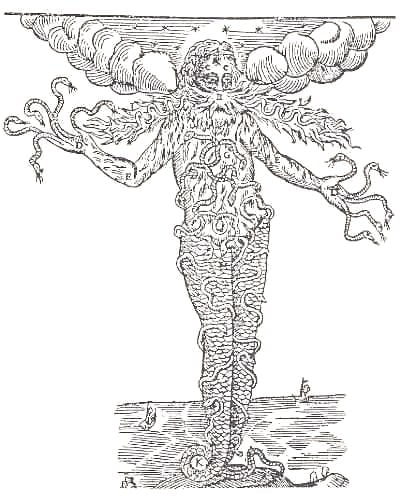Greek mythology is full of fantastic creatures and monsters. From Dragons to Giants to Demons and Ghosts! Greek mythology is filled with creatures for the great gods or heroes to vanquish.
The purpose of Greek monsters, other than to entertain, was to juxtapose the great acts of heroes such as Hercules, Perseus, and Jason, The Leader Of The Argonauts, to name a few. Like the gods, monsters and creatures were created to explain tough times or natural phenomena that the ancient Greeks did not understand.
Before diving into the many different categories of terrifying and sometimes bizarre creatures and monsters of ancient Greece, it is pertinent, to begin with, two monsters in particular. The pair, Typhon and Echidna were responsible for the creation of many of the creatures that terrorized fictional heroes, and no doubt gave the ancients nightmares.
Typhon, Father of all Monsters
Typhon, a monstrous serpentine giant was one of the most feared monsters in Greek mythology. According to the ancient Greek poet Hesiod, Typhon was the son of the primordial deities Gaia and Tartarus. In the Homeric Hymn to Apollo, Homer states that Typhon is the son of Hera and was given to another monster, the giant serpent, Python, to be raised. Another version is that he was the offspring of the Titan Cronus.
Homer described Typhon as cruel, while Hesiod describes Typhon as immensely powerful with one-hundred fire-breathing snake heads on his shoulders. Typhon was supposed to emit every type of sound imaginable from his one-hundred heads, that only the gods could understand. Other sources depict Typhon as a giant winged humanoid monster.
Typhon famously challenged Zeus for the rule of the cosmos. The two engaged in a fierce battle which Typhon lost thanks to Zeus’ Thunderbolt.
Echidna, Mother of all Monsters
Echidna was a flesh-eating, half-woman, half-snake dracaena or female dragon. The dracaena was the mate of Typhon, but despite this, she lived alone in a cave in Arima. Echidna possibly represented natural rot, such as foul water, slime, sickness, and disease. Hesiod equates her to rotting salt marshes and fetid sea foam.
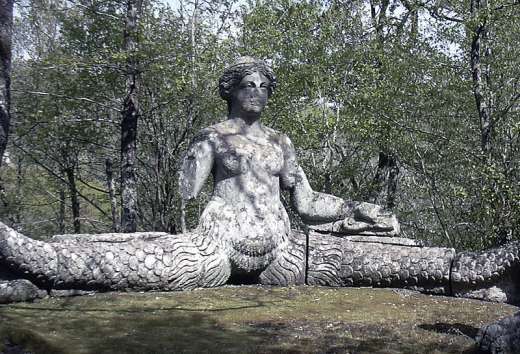
Hesiod describes the human half of Echidna as resembling a beautiful maiden, similar in appearance to the beautiful woodland spirits. In earlier tales, she was considered immortal, but later myths describe her death at the hands of a giant doing the bidding of the Queen of the Gods, Hera.
The Children of Typhon and Echidna
Aside from the eight children listed below Typhon and Echidna are credited with the creation of other monsters. The pair are believed to have created the Caucasian Eagle that ate the liver of the Titan Prometheus, The Titan Who Defied Zeus in Tartarus.
Orthrus
First, the pair created Orthrus, who was a two-headed hound. Orthrus guarded the cattle of the three-headed giant Geryon. Geryon’s cattle were kept on an island called Erytheia, meaning “red one.” In the tale of Hercules, the hero must travel to sunset island and retrieve the cattle as his tenth labor. Hercules kills the two-headed hound during the theft.
Hesiod makes Orthrus the father of the Sphinx and the Nemean Lion, The Indomitable Beast, but other sources make these siblings of Orthrus.
Cerberus
Cerberus is the famous hound who guarded the gates of the Underworld in Greek mythology. Sometimes known as the hound of Hades, the god of the underworld, he is described as having three heads, a serpent as a tail, and snakes protruding from his body. Hesiod gives Cerberus fifty heads, but he is usually depicted with three.
It was the job of Cerberus to ensure none of the dead left the Underworld or that no one entered who was not supposed to. The terrifying hound is the last labor of Hercules.
Hydra of Lerna
Hydra was a snake-like water monster who dwelled at the entrance to the Underworld in the Lake of Lemar in the Argolid region. In popular culture, the Hydra appears with six heads that grow back when cut off.
In the Theogony, Hydra has poisonous breath and blood, the smell of which could kill. The number of heads possessed by the Hydra varies in ancient sources, with some stating nine and others six. The Hydra is killed by Hercules during his second labor.
Ladon
Ladon was the dragon who guarded the golden apples in the garden of the nymphs of the west or Hesperides. It was slain by Hercules as he retrieved the golden apples
The Colchian Dragon
The Colchian dragon is a giant dragon that appears in the story of Jason and the Argonaut’s Quest for the Golden Fleece. This offspring of Typhon guarded the famed golden fleece in Colchis, The Enchanted Land of the Golden Fleece, in the sacred grove of the Olympian god of war, Ares.
The dragon was either killed by Jason in pursuit of the fleece or put to sleep by a witch. The dragon’s teeth were taken by the king of Colchis, Aeetes. Jason planted the teeth in the sacred field of Ares, the god of war, and soon a tribe of warriors grew from the ground.
The Chimera
The Chimera was one of the more bizarre monsters found in Greek myths. It was described as being three-headed, with the body and head of a lion. The Chimera had a goat head protruding from its back, the udders of a goat, and a serpentine tail. The fantastical monster could breathe fire from its goat head and terrorized the Anatolian countryside of Lycia.
Hesiod and Homer mention the Chimera. In Homer’s Iliad, the fire-breathing beast is killed by the hero Bellerophon, The Hero Who Tamed Pegasus. Bellerophon was ordered to kill the monster by the king of Lycia. The hero did so with the help of another mythical creature, a pegasus.
It is believed the Chimera was a representation of the volcano in Lycia.
The Gorgons
The Gorgons were three of Echidna and Typhon’s daughters, called Stheno, Euryale, and the most famous sister, Medusa. They were a group of monsters with snakes for hair who could turn anyone who looked into their eyes to stone.
The Gorgons, The Enigmatic Sisters are some of the oldest monsters to be mentioned in Greek mythology. They first appear in the works of Homer. Stheno and Euryale were immortal, but Medusa was not. Medusa was killed by the hero and famed monster slayer, Perseus.
The Nemean Lion
The lion of Nemea is regarded by Hesiod to be a child of Orthrus, and not of Echidna and Typhon. Hesiod places the lion in the care of the goddess Hera. However, other ancient authors make the lion the child of the Echidna and Typhon.
The lion was said to roam the area of Nemea wreaking havoc. The lion had extremely sharp claws and was incredibly difficult to kill because its golden fur was impenetrable to mortal weapons. In the myth of Hercules Labors, slaying the Nemean Lion is the first task given to the hero by King Eurystheus.
Mythical Monsters
The ancient Greeks created all sorts of terrifyingly interesting beasts and monsters for a myriad of reasons. Monsters represented chaos, they were uncontrollable elements usually relating to the natural world. They also represented human behavioral traits that were seen as risky or wicked. Monsters in mythology are the personification of human fear.
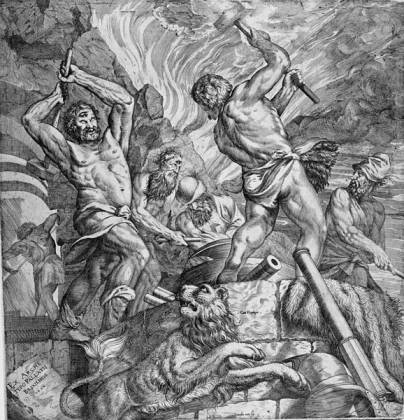
These uncontrollable elements are put in the paths of great heroes so they may conquer evil and thus restore order to the chaotic world. From giant sea snakes to child-gobbling bogeymen, the ancient Greeks certainly had a knack for creating terrifying creatures to haunt their stories.
The Lamia
Lamia is the ancient Greek version of the bogeyman which is why she is definitely at the top of the list of ‘most terrifying Greek monsters.’ In early mythology, Lamia was a beautiful queen who became Zeus’ lover (one of many). Zeus’ wife, Hera, did not take kindly to her husband’s extramarital affairs, so she took Lamia’s children from her by death or kidnapping.
Lamia, was later driven insane by her unimaginable grief, and began eating children. Following this, Lamia’s physical appearance transformed. Her outward appearance began to match the heinousness of her acts. Lamia thus became a hideous monster. Despite being one of the most awful of the Greek monsters, her appearance is undocumented. She is simply described as monstrous.
Charybdis
Charybdis was a sea monster who lived in the strait of Messina. Homer mentions Charybdis in his epic poem, the Odyssey. The creature was said to be the cause of the turbulent waters in the strait, making the monster the personification of a whirlpool.
Charybdis was believed to be the offspring of the primordial deity Gaia and the Olympian god of the sea, Poseidon. Charybdis lived under a rock on one side of the strait, opposite another monster called Scylla, The Sea Monster of Ancient Lore, who lived inside a rock. Sailors passing through the strait were fearful of getting within range of either sea monster.
The ancients believed Charybdis spat out large volumes of water that formed the boat destroying whirlpools in the strait.
Empusa
Initially a single entity, the Empusa was a shape-shifting one-legged female entity controlled by Hecate, the goddess of magic. In later tales, there are several Empusai who take on a vampiric quality or that of a succubus. In later antiquity, these phantoms feed on young men.
The Cyclopes
There are two groups of giant, one-eyed monsters known as Cyclopes, found in Greek mythology. The first group, the Hesiodic, appears in Hesiod’s Theogony. Here the Cyclopes are the children of the primordial deities, Gaia and Uranus.
The Cyclopes, Brontes, Steropes, and Arges, were locked away in Tartarus along with their siblings, the Hecatoncheires. Uranus had banished them there when they were born. They were supposed to be released from their gloomy prison when their Titan brother Cronus deposed their father.
Sadly, they were left imprisoned until the almighty Zeus freed them to aid his fight against the Titans. The three Cyclopes then helped the Olympians win the Titanomachy. After the war, the Titans lived with the god Hephaestus, the god of blacksmiths under Mount Etna. The Cyclopes honed their metalworking talents and forged Zeus’ thunderbolt as well as Poseidon’s trident.
The Cyclopes all met untimely deaths at the hands of the Olympian gods they had helped. Brontes and Steropes were killed by Apollo over the death of Apollo’s son by Zeus’ thunderbolt. Arges was killed by Hermes while guarding the mortal princess, Io from Zeus.
The second group of Cyclopes is the Homeric Cyclops. They are not described as favorably as Hesiod’s monsters. Homer makes the Cyclopes an uncivilized group of Sicilian shepherds.
The Hecatoncheires
The Hecatoncheires were the siblings of the Cyclopes and the Titan gods. Cottus, Briareus, and Gyges were the one-hundred-handed children of Gaia and Uranus. The brothers were enormous giants who boasted incredible strength. In addition to having one-hundred hands, they had fifty heads.
The Hecatoncheires play a vital role in Hesiod’s Theogony, which details the creation of the universe, the genealogy of the gods, and Zeus’ rise to power. The three monstrous brothers were locked away in Tartarus with their Cyclops’ siblings until Zeus freed them. Like their brothers, they helped the Olympians defeat the Titans.
The Harpies
The Harpies were vicious monsters who had the body of a bird and the head of a woman. They were under the command of Zeus, who would often send them to snatch people and objects from the Earth.
The Harpies would also snatch evildoers from Earth, and deliver them to the Erinyes, The Goddesses of Revenge And Retribution. Often if people suddenly went missing, their absence would be attributed to the Harpies. The Harpies were also associated with destructive winds.
In mythology, the Harpies feature in the tale of Jason and the Argonauts, where they torment the king of Thrace at Zeus’ behest.
The Sirens
Sirens are a group of monsters that are half-fish and half-woman. Unlike Harpies, Sirens were a type of sea nymph. Sirens had seductive singing voices, which they would use to lure sailors to their deaths. Homer mentions the creatures in the Odyssey, where the hero, Odysseus, The Cunning Hero Of The Trojan War, saves his crew from falling prey to the seductive song of the Sirens.
The Sphinx
The Sphinx was a female creature that possessed the head of a woman, the haunches of a lion, the wings of an eagle, and the tail of a serpent. In the ancient Greek myth of Oedipus, the Sphinx was sent by the gods to terrorize the town of Thebes. The creature showed no mercy and would devour all those that could not answer her riddle.
Oedipus, The Tragic Hero Who Solved the Riddle but Couldn’t Unravel His Fate eventually solved the riddle of the Sphinx, who then threw herself from a cliff and died.
The Mares of Diomedes
No list of mythical ancient Greek monsters is complete without mentioning the four human-eating horses known as the Mares of Diomedes. The wild man-eating, as well as possibly fire-breathing horses belonged to king Diomedes of Thrace and were the eighth labor of Hercules.
Mythical Creatures
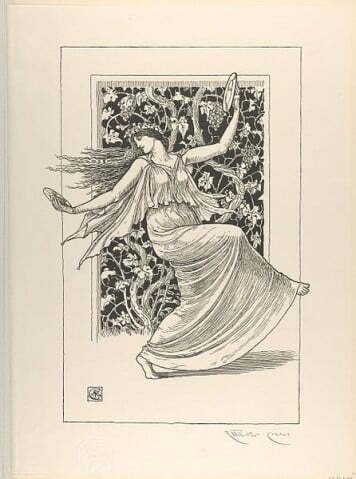
The ancient Greeks believed the mythical creatures that appeared in their tales were as real as you or I. The belief was that they existed in a realm between worlds.
Several mythical creatures were created to explain natural phenomena such as volcanoes and storm winds. Mythical creatures also served as the moral or physical opposite of the great hero, tasked with killing or capturing them.
The Centaurs
In Greek mythology, the centaurs were a tribe of half-human, half-horse creatures. Centaurs are perhaps one of the most well-known mythical creatures. They were believed to be a wild, uncivilized tribe who lived in the forests and mountains of Magnesia in Thessaly.
The Centaurs were created by a cloud nymph called Nephele and king Ixion of the Thessalian Lapith tribe. There were several different types of Centaurs who lived in different regions. There was even a tribe of horned Centaurs who lived in Cyprus.
The Centaurs could not handle their wine and ended up in a war with the Lapiths tribe after a wedding. It was during this war that the Centaurs were destroyed.
Nymphs
Nymphs feature prominently throughout Greek mythology. They are the personification of nature. Nymphs are usually beautiful women who represent a specific aspect of nature, such as trees, clouds, wind, and water. They also represented meadows and woodlands. These nature spirits were responsible for all of the fauna and flora where they lived.
The great heroes of ancient Greek stories often had a nymph for a mother. Achilles, The Mightiest Champion of The Trojan War, for example, was the son of the water nymph Thetis, a sea nymph. Nymphs were often lovers of the gods or companions to them (such as Artemis.) It was the nymphs who cared for Zeus as an infant while he was in hiding.
Satyrs
Satyrs are a group of hybrid nature spirits who are half-goat and half man. They are often associated with fertility. These animalistic nature spirits lived in remote forests and mountains. They were the companions of the god of wine and fertility, Dionysus, the god of wine and revelry.
Satyrs were drunken, uncouth creatures who could often be found chasing nymphs or engaging in sordid lustful acts. Satyrs are mentioned by Hesiod, who does not think too kindly of them as he describes them as good-for-nothing little men.
The Griffin
Griffins were mythical creatures that had the head, wings, and talons of an eagle with the body of a lion. Griffins made their nests in the mountains and were known to guard treasures, in particular, gold deposits of the ancient world. The Griffin was regarded as the king of ancient beasts and certainly the most majestic.
Pegasus
Pegasus was an immortal winged horse who was the child of the god Poseidon and the Gorgon Medusa. Born from his mother’s neck after she was killed by the hero Perseus. The winged horse inherited the ability to create streams of water with a strike of his hoof from his father. Pegasus is credited with the creation of several springs in ancient Greece, including the sacred spring of the divine Muses, The Divine Inspirations Behind Art, Science, and Culture.
The wild, winged horse was tamed by the hero Bellerophon, with some help of the goddess Athena, the goddess of wisdom. Together Pegasus and Bellerophon had many great adventures, which ended when the hero attempted to live among the gods on mount Olympus…uninvited.
Zeus did not take kindly to the mortal heroes’ lofty ideas and sent a gadfly to bite Pegasus. When the gadfly bit, Pegasus flung Bellerophon to his death. Following this Pegasus was stabled by Zeus and went on to pull Zeus’ chariot. A constellation was later named in honor of the immortal horse.
The Minotaur
The Minotaur was a flesh-eating monster who possessed the head of a bull and the torso of a man. He was kept in a Labyrinth under the palace of king Minos of Crete. The tale of the Minotaur is one of the most popular stories from ancient Greece.
King Minos was given a magnificent white bull as a gift from the god of the sea, Poseidon. Poseidon wished for the king to sacrifice the beast in his honor. King Minos refused and instead kept the beast. In revenge, Poseidon made the queen of Crete lust after the bull. She then mated with it and gave birth to the Minotaur.
The Erymanthian Boar
This mythical creature features in the Greek myth about the labors of Hercules. Hercules was tasked with capturing the Erymanthian boar alive as his fourth labor. The fearsome creature was described as a fast, shaggy, heavy, tusked wild boar.
The boar was an enormous beast that roamed Mount Erymanthos, destroying any farmlands it came across in its travels. The boar is associated with the goddess of the hunt, Artemis, goddess of the hunt. This was because legend had it she would send it to plague a community if they had wronged her.
The Gigantes
The Gigantes, or simply Giants, were a tribe of enormous, often monstrous men who were created by the primordial goddess, Gaia. The most famous of these ancient Greek giants are a group of one hundred Thracian giants. They were known as the Gigantes.
The Gigantes went to war with the Olympian gods at the request of their mother, Gaia, for the control of the Cosmos. Gaia wanted to avenge her fallen children, the Titans who had been vanquished by the Olympian gods. Because of the Gigantomachy, the Gigantes are the main characters in one of the most important conflicts in Greek mythology.
The Gigantes are described as strong men who wore armor and carried long spears. They were quick to anger and extremely violent, this is according to the ancient Greek poet Pindar.
The Gigantes lost the war with the Olympians, who then restored order to the mortal realm. The Giants were later imprisoned in various places, usually under mountains. They became the reason for volcanic eruptions as well as earth quakes.
Dragons
Greek mythology is filled with tales of dragons. There were several different types of dragons found in Greek myths; these are the drakon, Cetea, and the dracaena. The ancient Greeks believed the serpentine drakon’s lived in the furthest regions of the world. The Cetea were sea dragons and the dracaena were female dragons.
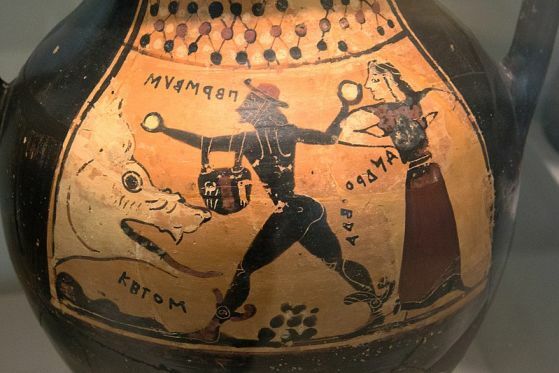
Most of the dragons resembled giant serpents who, instead of breathing fire like western dragons, had poisonous spit and several rows of razor-sharp teeth. Often the Serpent dragons had several heads. Dragons were often the children of gods.
Python
Perhaps the most famous of the ancient Greek dragons was Python. He was a drakon believed to live in the center (or naval) of the ancient world, Delphi. The offspring of the primordial deity Gaia, believed to have come into being from the mud left behind when flood waters receded.
Python fought an epic battle with the Olympian god of light, wisdom, and music, Apollo. There are several different explanations in Greek mythology as to why Apollo and Python became engaged in battle.
The first myth of Python and Apollo’s battle is that Hera (the Queen of the Gods) sent Python to harass Leto, Apollo, and Artemis’ mother. This was because Hera’s husband, Zeus, had an affair with Leto. Then Apollo later sought revenge on Python for harassing his mother.
Another version of the tale is that Python was the protector of the oracle at Delphi (originally an oracle of Gaia). Apollo traveled to Delphi because he wanted the site to be home to his oracle. Then a fierce battle ensued between the two, which Apollo won after firing 100 arrows at the serpent.
Python’s body fell into a fissure in the Earth. The drakons decaying corpse emitted strong fumes that rose out of the Earth and into the temple at Delphi.
Scythian Dracaena
The Scythian Dracaena was a female dragon who possessed the upper body of a woman, and the lower half of a serpent. She was the first ruler of Scythia. The Dracaena made the hero Hercules mate with her to get the cattle of Geryon back, which she had stolen from him.
Hercules obliged, and subsequently, the great hero became linked to the bloodline of the Scythian Kings.
The Cetus
The Cetus, or Cetea, refer to giant sea monsters in ancient Greek mythology. It feature in several myths, but two, in particular, are most famed. One Cetus was killed by the greatest monster slayer Perseus. Another was killed by Hercules. The Cetea were said to be extremely large snake-like monsters with several rows of razor-sharp teeth.
Campe
Campe was an enormous dracaena who guarded the primordial deities Gaia and Uranus’ monstrous children. Thay had all been locked away in Tartarus by Uranus, in the misty pit at the bottom of the universe.
In Greek mythology, when the new generation of gods led by Zeus wanted to overthrow the rule of the Titans, a ten-year war ensued. Zeus however knew that he and his fellow Olympians could not beat the Titans without some help.
Zeus then journeyed to Tartarus to free the one-hundred-handed Hecatoncheires and the one-eyed Cyclops. Campe was first killed by Zeus, thus allowing Gaia’s monstrous children to help the Olympians overthrow the Titans.
The Monsters of Ancient Greece in the Modern World
While the days of great heroes such as Hercules and Perseus have long since passed, humans still create monsters to deal with the more frightening aspects of everyday life.
The Greek monsters and creatures listed above have not simply disappeared into the pages of history, instead, they are often brought to life through television and film. The many monsters and creatures of Greek mythology continue to amuse, frighten and delight us.
Featured Image Credit: Wenceslaus Hollar, Public domain, via Wikimedia Commons

